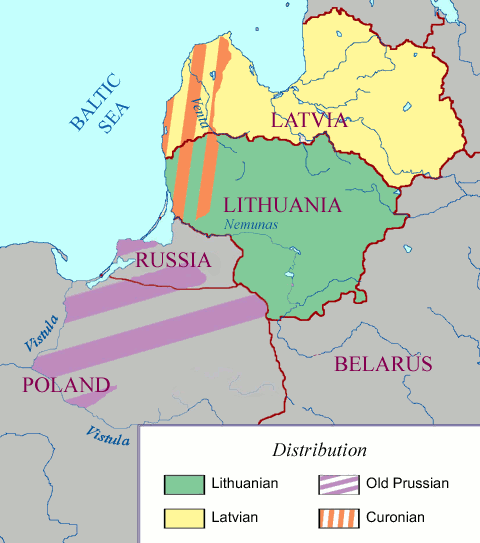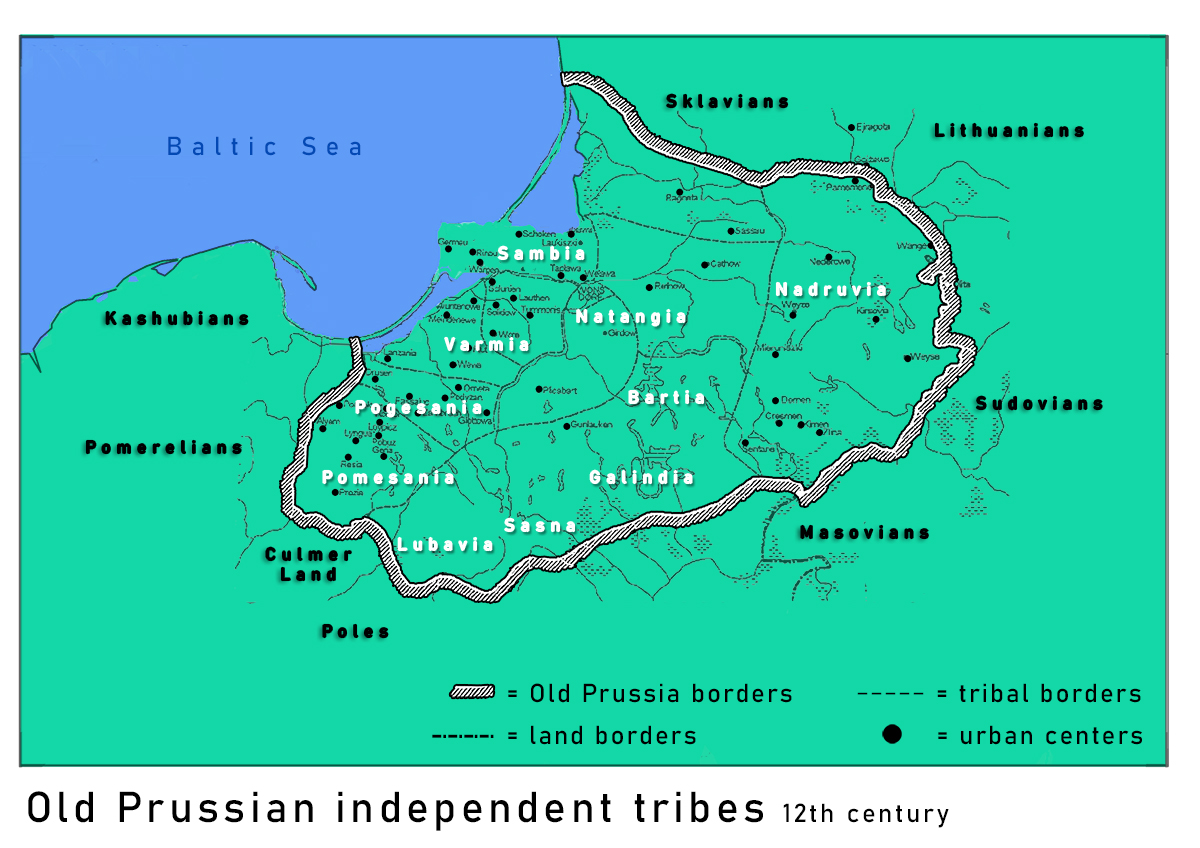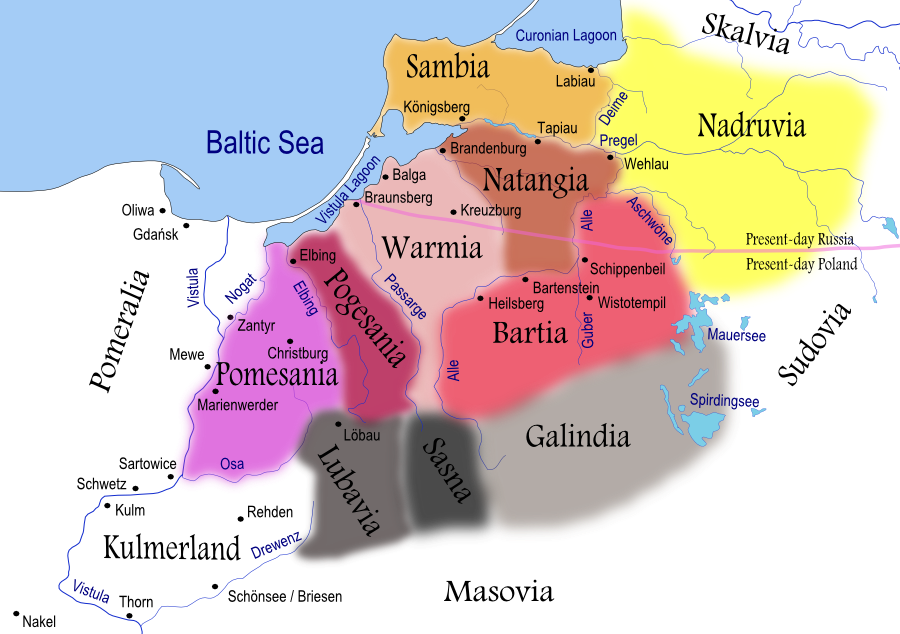|
Balts
The Balts or Baltic peoples (, ) are a group of peoples inhabiting the eastern coast of the Baltic Sea who speak Baltic languages. Among the Baltic peoples are modern-day Lithuanians (including Samogitians) and Latvians (including Latgalians (modern), Latgalians) — all East Balts — as well as the Old Prussians, Curonians, Sudovians, Skalvians, Yotvingians and Galindians — the West Balts — whose languages and cultures are now extinct, but made a large influence on the living branches, especially on literary Lithuanian language. The Balts are descended from a group of Proto-Indo-Europeans, Proto-Indo-European tribes who settled the area between the lower Vistula and southeast shore of the Baltic Sea and upper Daugava and Dnieper rivers, and which over time became differentiated into West and East Balts. In the fifth century CE, parts of the eastern Baltic coast began to be settled by the ancestors of the Western Balts, whereas the East Balts lived in modern-day Belarus, ... [...More Info...] [...Related Items...] OR: [Wikipedia] [Google] [Baidu] |
Baltic Languages
The Baltic languages are a branch of the Indo-European languages, Indo-European language family spoken natively or as a second language by a population of about 6.5–7.0 million people''"Lietuviai Pasaulyje"'' (PDF) (in Lithuanian). Lietuvos statistikos departamentas. Retrieved 5 May 2015. mainly in areas extending east and southeast of the Baltic Sea in Europe. Together with the Slavic languages, they form the Balto-Slavic languages, Balto-Slavic branch of the Indo-European family. Scholars usually regard them as a single Subgrouping, subgroup divided into two branches: West Baltic languages, West Baltic (containing only extinct languages) and East Baltic languages, East Baltic (containing at least two Modern language, living languages, Lithuanian language, Lithuanian, Latvian l ... [...More Info...] [...Related Items...] OR: [Wikipedia] [Google] [Baidu] |
Old Prussians
Old Prussians, Baltic Prussians or simply Prussians were a Balts, Baltic people that inhabited the Prussia (region), region of Prussia, on the southeastern shore of the Baltic Sea between the Vistula Lagoon to the west and the Curonian Lagoon to the east. As Balts, they spoke an Indo-European languages, Indo-European language of the Baltic languages, Baltic branch now known as Old Prussian language, Old Prussian and worshipped pre-Christian Prussian mythology, deities. Their ethnonym was later adopted by predominantly Low German language, Low German-speaking inhabitants of the region. The duchy of the Duchy of Poland (c. 960–1025), Polans under Mieszko I, which was the predecessor of the Kingdom of Poland (1025–1385), Kingdom of Poland, first attempted to conquer and baptize the Baltic tribes during the 10th century, but repeatedly encountered strong resistance. Not until the 13th century were the Old Prussians subjugated and their lands conquered by the State of the Teuton ... [...More Info...] [...Related Items...] OR: [Wikipedia] [Google] [Baidu] |
Curonians
:''The Kursenieki are also sometimes known as Curonians.'' The Curonians or Kurs (; ) were a medieval Balts, Baltic tribe living on the shores of the Baltic Sea in the 5th–16th centuries, in what are now western parts of Latvia and Lithuania. They eventually merged with other Baltic tribes contributing to the ethnogenesis of present-day Latvians and Lithuanians. Curonians gave their name to the region of Courland (''Kurzeme''), Kuršėnai town, Curonian spit and many other localities. They spoke the Curonian language. Origin The ethnic origin of the Curonians has been disputed in the past. Some researchers place the Curonians in the eastern Baltic group.Östen Dahl (ed.) 2001, ''The Circum-Baltic Languages: Typology and Contact,'' vol. 1 Others hold that the Curonians were related to Old Prussians who belonged in the western Baltic group. History The historical Curonians were described in contemporary sources as warriors, sailors and pirates. They are on the record havin ... [...More Info...] [...Related Items...] OR: [Wikipedia] [Google] [Baidu] |
Lithuanians
Lithuanians () are a Balts, Baltic ethnic group. They are native to Lithuania, where they number around 2,378,118 people. Another two million make up the Lithuanian diaspora, largely found in countries such as the Lithuanian Americans, United States, Lithuanians in the United Kingdom, United Kingdom, Lithuanian Brazilians, Brazil and Lithuanian Canadians, Canada. Their native language is Lithuanian language, Lithuanian, one of only two surviving members of the Baltic language family along with Latvian language, Latvian. According to the Lithuanian census of 2021, census conducted in 2021, 84.6% of the population of Lithuania identified themselves as Lithuanians. Most Lithuanians belong to the Catholic Church in Lithuania, Catholic Church, while the Lietuvininkai who lived in the northern part of East Prussia prior to World War II, were mostly Lutherans. History The territory of the Balts, including modern Lithuania, was once inhabited by several Baltic tribal entities (Sudovi ... [...More Info...] [...Related Items...] OR: [Wikipedia] [Google] [Baidu] |
Galindians
Galindians were two distinct, and now extinct, tribes of the Balts. Most commonly, Galindians refers to the Western Galindians who lived in the southeast part of Prussia. Less commonly, it is used for a tribe that lived in the area of what is today Moscow (). Etymology Johannes Voigt (supported by many others) suggested that name is derived from the Baltic word *''galas'' ("the end", probably synonymous to "located farthest", "located near the border of the territory or area"), alluding to the fact that they settled for some time further west and further east than any other Baltic tribe. Polish historian suggested another etymology: the name ''Galind''- may be derived from the hydronym of in the province of Olsztyn, in what was the very center of ancient ''Galindia''. J. Nalepa (1971) suggested the root *''gal''- was originally a different ablaut grade of the same root found in Lithuanian "''gilus''" – deep, and "''gelmė''" – depth. The original meaning referred to t ... [...More Info...] [...Related Items...] OR: [Wikipedia] [Google] [Baidu] |
Yotvingians
Yotvingians, also called Sudovians, Jatvians, or Jatvingians, were a Western Baltic people who were closely tied to the Old Prussians. The linguist Petras Būtėnas asserts that they were closest to the Lithuanians. The Yotvingians contributed to the formation of the Lithuanian state. Culture Etymology According to Vytautas Mažiulis, the name Sūduva derives from a local hydronym ''*Sūd(a)vā'', derived from a Baltic verbal root, ''*sū-'': to flow, pour. Language Numerous linguists consider the Yotvingian language as a dialect of the Old Prussian language. The Lithuanian linguist Petras Būtėnas states that such an opinion is incorrect, because the Lithuanian predominates in Yotvingian toponymy instead of the Old Prussian . The Lithuanian professor Zigmas Zinkevičius wrote that the Yotvingians spoke a dialect of Western Baltic that was closer to Lithuanian than Prussian. The only known written source of the Yotvingian language is the manuscript "". Geogr ... [...More Info...] [...Related Items...] OR: [Wikipedia] [Google] [Baidu] |
Latvians
Latvians () are a Baltic ethnic group and nation native to Latvia and the immediate geographical region, the Baltics. They are occasionally also referred to as Letts, especially in older bibliography. Latvians share a common Latvian language, culture, history and ancestry. History A Balto-Finnic-speaking tribe known as the Livs settled among the northern coast of modern day Latvia. The Germanic settlers derived their name for the natives from the term Liv. They referred to all the natives as "Letts" and the nation as "Lettland", naming their colony Livonia or Livland. The Latin form, ''Livonia'', gradually referred to the whole territory of modern-day Latvia as well as southern Estonia, which had fallen under Germanic influence. Latvians and Lithuanians are the only surviving members of the Baltic branch of the Indo-European family. Culture Influences Latvians share a common language and have a unique culture with traditions, holidays, customs and arts. The culture a ... [...More Info...] [...Related Items...] OR: [Wikipedia] [Google] [Baidu] |
Sudovians
Yotvingians, also called Sudovians, Jatvians, or Jatvingians, were a Western Baltic people who were closely tied to the Old Prussians. The linguist Petras Būtėnas asserts that they were closest to the Lithuanians. The Yotvingians contributed to the formation of the Lithuanian state. Culture Etymology According to Vytautas Mažiulis, the name Sūduva derives from a local hydronym ''*Sūd(a)vā'', derived from a Baltic verbal root, ''*sū-'': to flow, pour. Language Numerous linguists consider the Yotvingian language as a dialect of the Old Prussian language. The Lithuanian linguist Petras Būtėnas states that such an opinion is incorrect, because the Lithuanian predominates in Yotvingian toponymy instead of the Old Prussian . The Lithuanian professor Zigmas Zinkevičius wrote that the Yotvingians spoke a dialect of Western Baltic that was closer to Lithuanian than Prussian. The only known written source of the Yotvingian language is the manuscript "". Geograph ... [...More Info...] [...Related Items...] OR: [Wikipedia] [Google] [Baidu] |
Skalvians
The Scalovians (; ), also known as the Skalvians, ''Schalwen'' and ''Schalmen'', were a Baltic tribe related to the Prussians. According to the '' Chronicon terrae Prussiae'' of Peter of Dusburg, the now extinct Scalovians inhabited the land of Scalovia south of the Curonians and Samogitians, by the lower Neman River ca. 1240. Geography This region is located at both sides of the river Memel north of Nadruvians and south of Samogitia. In the North-East it stretched to rivers Šešupė, Ežeruona and Jūra. In the East it bordered on Sudovia, in the North-West on river Minija, in the West on the Curonian Lagoon and in the South-West on river Gilija. The center were the towns of Rusnė, Ragainė and Tilžė. Name The meaning is uncertain: ''skalwa'' "splinter (living split off)" or ''skalauti'' "between waters". According to Prussian legends, the tribe's name is derived from one of the sons of King Widewuto named Schalauo. History The inhabitants can be traced back to ... [...More Info...] [...Related Items...] OR: [Wikipedia] [Google] [Baidu] |
Lithuanian Language
Lithuanian (, ) is an East Baltic languages, East Baltic language belonging to the Baltic languages, Baltic branch of the Indo-European language family. It is the language of Lithuanians and the official language of Lithuania as well as one of the official languages of the European Union. There are approximately 2.8 million native Lithuanian speakers in Lithuania and about 1 million speakers elsewhere. Around half a million inhabitants of Lithuania of non-Lithuanian background speak Lithuanian daily as a second language. Lithuanian is closely related to neighbouring Latvian language, Latvian, though the two languages are not mutually intelligible. It is written in a Latin script. In some respects, some linguists consider it to be the most conservative (language), conservative of the existing Indo-European languages, retaining features of the Proto-Indo-European language that had disappeared through development from other descendant languages. History Among Indo-European languag ... [...More Info...] [...Related Items...] OR: [Wikipedia] [Google] [Baidu] |
Slavs
The Slavs or Slavic people are groups of people who speak Slavic languages. Slavs are geographically distributed throughout the northern parts of Eurasia; they predominantly inhabit Central Europe, Eastern Europe, Southeastern Europe, and Northern Asia, though there is a large Slavic minority scattered across the Baltic states and Central Asia, and a substantial Slavic diaspora in the Americas, Western Europe, and Northern Europe. Early Slavs lived during the Migration Period and the Early Middle Ages (approximately from the 5th to the 10th century AD), and came to control large parts of Central, Eastern, and Southeast Europe between the sixth and seventh centuries. Beginning in the 7th century, they were gradually Christianized. By the 12th century, they formed the core population of a number of medieval Christian states: East Slavs in the Kievan Rus', South Slavs in the Bulgarian Empire, the Principality of Serbia, the Duchy of Croatia and the Banate of B ... [...More Info...] [...Related Items...] OR: [Wikipedia] [Google] [Baidu] |






